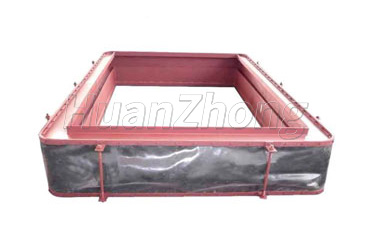Three Advantages of Rectangular Fabric Expansion Joints.
Three Advantages of Rectangular Fabric Expansion Joints.
Rectangular fabric expansion joints offer several advantages in various engineering and industrial applications. These expansion joints are flexible connections made of high-quality fabric materials, designed to absorb movements caused by thermal expansion, vibration, and misalignment. Here are three key advantages of using rectangular fabric expansion joints.
Flexibility and Range of Movement: One major advantage of rectangular fabric expansion joints is their exceptional flexibility and range of movement. These expansion joints can accommodate multidirectional movement and can be designed to handle large movements of up to several meters in all three axes (x, y, and z). This flexibility is especially valuable in applications where thermal expansion is significant or where equipment experiences vibrations or misalignment. The ability to absorb movement helps protect the integrity of the system, preventing damage and prolonging the lifespan of the connected equipment.

High Temperature Resistance: Another significant advantage of rectangular fabric expansion joints is their high-temperature resistance. These expansion joints are designed to withstand extreme temperatures, making them ideal for applications that involve hot gases or liquids. The fabric materials used in their construction are often reinforced with heat-resistant fibers, such as glass or aramid fibers, enabling them to handle temperatures ranging from -200°C to 1200°C or even higher, depending on the specific design and materials used. This high-temperature resistance makes them suitable for applications in power plants, industrial furnaces, exhaust systems, and other high-temperature environments.
Noise and Vibration Reduction: Rectangular fabric expansion joints also provide excellent noise and vibration reduction capabilities. When gases or liquids flow through the system, they can create vibrations and noise that may not only compromise the functioning of the equipment but also cause discomfort to workers. The flexible nature of fabric expansion joints helps to absorb and dampen these vibrations, minimizing noise transmission and preventing harmful effects on the connected equipment and surrounding structures. Additionally, the fabric materials used in these expansion joints have inherent sound-absorbing properties that further contribute to noise reduction, creating a quieter and more comfortable working environment.
In summary, rectangular fabric expansion joints offer several advantages in engineering and industrial applications. Their exceptional flexibility and range of movement, high-temperature resistance, and noise and vibration reduction capabilities make them valuable components in systems that undergo thermal expansion, vibration, or misalignment. By properly selecting and installing rectangular fabric expansion joints, engineers can enhance the safety, efficiency, and longevity of their systems, ensuring smooth operation and minimizing the risk of damage or failure.
